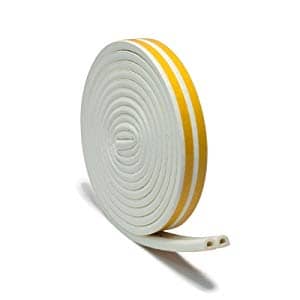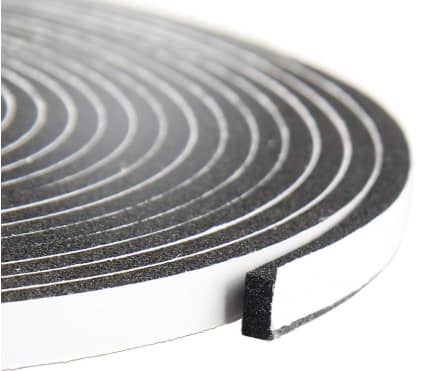Windows are one of the main places where noise can get in or out of a room. Your walls might be doing a good job blocking noise because they’re thick. But regular glass windows aren’t as thick, so noise can easily sneak through them. If you’re looking for ways on how to soundproof windows yourself without giving up the ability to use them, it can be a bit of a challenge. But with the right approach, you can keep the noise out without losing the benefits of your windows.
Sound treating a window helps reduce distracting noise from coming through. You’ll want to seal off any gaps that may be around the frame. You will also need to consider covering the window with a soundproofing material within the frame or outside the frame. This gives the window density and also implements a sound treatment strategy. The air gap formed through these inserts diffuses sound waves and thus reduces sound travel. In some cases replacing the window altogether with an acoustic-treated window is required.
You’ll want to cover the window with a soundproofing material within the frame or on the outside of the frame.
If you have an existing window facing a noisy area, you will have faced issues with the sound coming in through that existing window. It could be traffic & highway noise, neighbors, barking dogs, HVAC, other machinery, etc.
Here are some methods you can do yourself with little to no DIY skills that I’ve found online.
Table of Contents
How to Soundproof Windows Yourself – First things first – “Must do’s.”
Your first step in reducing unwanted sound from entering through your existing windows is plugging the gaps.
Sealing the smallest crack will make a big difference. If the windows are not closing properly, you should deal with that first.
Sound vibration travels through air, and a 1% air gap can allow 30% of the sound to travel through. Find all those holes and voids that sound is traveling through and seal them up.
Sound sealing or weatherproofing for an air-tight seal
Airgaps need to be treated to ensure complete coverage and manage sound seeping in through the frame. It would be best if you did this on both sides and at the top of the frame. Weatherstripping requires little effort but, done properly; it’s an effective sound management method.
Most products use a peel-and-stick function. Surface preparation is required as the glue needs a clean area to ensure adhesion. An alcohol wash is not always required but is recommended. Installation should be done on the inner part of the frame.
You can use two methods for this:
Acoustic gasket
This is a foam rubber composite material that is a hollow “D” shape. When compressed, the gasket seals off and prevents airflow. If the gap is wide enough, you may end up with an air pocket which is just as effective as a soundproofing method.
Peel off the protective strip to expose the sticky side of the tape and then stick the gasket to the frame on all the edges as required.
Closed-cell foam
Acoustic-treated foam is the most commonly used material for this. It is compressed between the inner door frame and the door itself, preventing sound from traveling through.
Again peel-and-stick methods are commonly utilized for the application, which makes it easy to install.
Seal cracks and gaps around the frame
Air and sound may also leak through gaps around the frame, so sealing off this area is another “Must-do” step in the sound management process.
Caulking in a layer of Green-glue around the frame will effectively address this issue. A large caulking gun is needed, and applying to bead around the entire frame is recommended.
Once you have established an air-tight seal around the frame and there are no gaps around the frame itself, you can look at other areas to address.
5 DIY methods to consider
National Consumer Center offers you a chance to get a $500 gift card to Amazon. The payouts are quick, and you can use the Gift Card to pay for some of your Amazon products.
Window barrier blanket (Sound blankets for windows)

This option is very similar to the window cover in installation; however, the material is different.
A quilted blanket is used to block out the sound effects. Most options have grommets to hang above a window easily. With Audimute, you can expect a noticeable improvement in the sound quality of your room due to reduced sound echoes and reverberation.
Pros and Cons of Audimute Window Barrier

Where to begin
This option will affect the light coming through the existing windows. Very easy to install without requiring any special skills. It is also easily removed and requires no heavy lifting. The results, unfortunately, are not as great; however, depending on your needs, this may be an effective measure. The installation is not permanent and is very cost-effective.
Soundproofing curtains
These curtains can boast up to 20 STC ratings, about as much as a hollow-core door can produce by itself. However, this is only in the presence of an MLV or similar lining. Most curtains advertised as “Soundproof” curtains are merely light blocking, but they have limited effectiveness in blocking sound. Done right with the proper soundproof curtains will result in a noticeable difference in the amount of sound coming into an area. Even at a 10 STC rating, it will sound like half the noise as before.
Using soundproof curtains specifically designed to block out sound vibrations can be a useful option when you have mild sound issues. They can also use it in combination with your other efforts employed to enhance effectiveness.
You will need to install a curtain rail and aim for a 4″ overlapping width and height. You’ll also want to have the curtain hanging as flush to the wall as possible. This will avoid sound leaking out from behind the curtain.
Pros and Cons of Soundproof Curtains

Installation of these curtains is simple when using the already fitted grommets. You can easily remove the curtains, and no permanent effects are left. Although the results are not great, you can use this in conjunction with any other method to improve the overall effectiveness. The cost is also relatively low for a 57″ X 84″ curtain. You can find them here on Amazon. They weigh between 4lbs to 7lbs, depending on the length.
Where to begin
Once you’ve bought the right size curtain for the existing windows, you want to cover, replace your current curtain with it. If you’re using a different method to hang your curtains, you’ll need to install a curtain rod to thread the grommets onto.
Window sound barrier panel
This comes in both a clear and opaque option that velcro sticks to your window’s outer frame. The clear option allows light to enter the room and still provides an equal amount of sound blocking.
Pros and Cons of Window Barrier

Pros and cons of a window sound barrier
It’s not very difficult to install, doesn’t require any special skills, and can be removed. Also, it doesn’t require any heavy lifting, and you won’t have to touch up the painting when you’re done. The results are typically between 7 – 15 significant dB reduction, making this method highly effective. Trademark Soundproofing offers a 48″ X 48″ panel for around $300.
Where to begin
You need to measure the required size of the panel, which should be 2″ greater than the window itself (this is where you will place the velcro strip), and order the panel.
Once you’ve selected the color, width and height required. This will determine your final price. See the video above for detailed how-to order instructions. Note that you will need at least 2″ on all sides to accommodate the velcro. Be sure to include that measurement in the final size you choose from the drop-down menu.
Using a Window Soundproofing Sealing Kit

A window soundproofing sealing kit is like a second window that sits in or against your existing window frame. It also uses a thermal and acoustic abatement material and can reduce 80% of sound traveling in and out of a room.
Pros and Cons Using a Window Soundproofing Sealing Kit

PrivacyShield® offers a tailor-made kit that you can easily install. For a 48″ X 48″ kit, you’ll be paying around $400. You can find the materials needed for installation at your local hardware store if you don’t have them already. No special tools are necessary either. You could do the job by yourself, but it wouldn’t hurt to have someone lend a helping hand.
Where to begin
The first thing you have to do is pre-order the kit tailor-made according to the measurements of your existing windows. They also have a detailed instruction manual to help you through the whole process.
Conclusion to How to Soundproof Windows Yourself
In conclusion, soundproofing your windows doesn’t have to break the bank. With options ranging from $40 to $400, you can find a solution that fits your budget and needs. The effectiveness of these methods varies, but investing in higher-quality products can offer better sound reduction and durability. Take the initiative to enhance the comfort of your home by tackling this project yourself. It’s an investment in your peace and tranquility.
Ready to make your home a quieter place? Start by choosing one of the soundproofing methods outlined above and see the difference it can make. Don’t wait to improve your living environment. Take action now and enjoy a more serene home today.
Soundproofing your home
Ready to transform your living space into a sanctuary of peace and quiet? Dive into our essential guide to soundproofing your home! From selecting the right materials to easy DIY installation tips, we’ve got everything you need to block out unwanted noise and create the tranquil environment you’ve always dreamed of.
Find out more about soundproofing your home’s windows, doors, ceilings, and floors. Don’t let the buzz of the outside world disrupt your peace. Start your soundproofing journey today and enjoy the serene, noise-free home you deserve. Click here to unlock the secrets to a quieter home!
If you are interested in simply changing to soundproof windows, you can see my blog on these windows. This would require you to replace your current windows completely.
Good luck and happy soundproofing!




